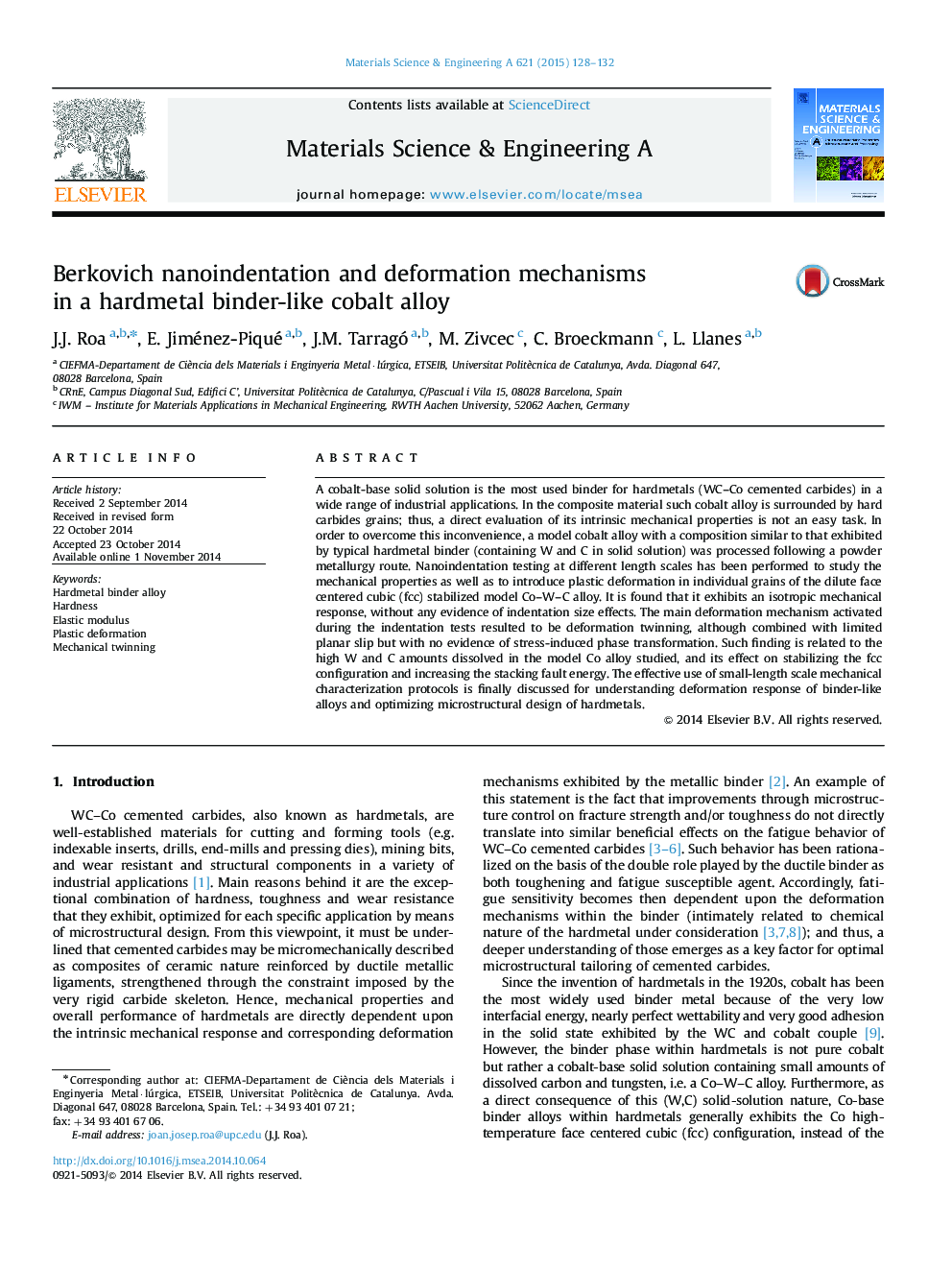| Article ID | Journal | Published Year | Pages | File Type |
|---|---|---|---|---|
| 7979468 | Materials Science and Engineering: A | 2015 | 5 Pages |
Abstract
A cobalt-base solid solution is the most used binder for hardmetals (WC-Co cemented carbides) in a wide range of industrial applications. In the composite material such cobalt alloy is surrounded by hard carbides grains; thus, a direct evaluation of its intrinsic mechanical properties is not an easy task. In order to overcome this inconvenience, a model cobalt alloy with a composition similar to that exhibited by typical hardmetal binder (containing W and C in solid solution) was processed following a powder metallurgy route. Nanoindentation testing at different length scales has been performed to study the mechanical properties as well as to introduce plastic deformation in individual grains of the dilute face centered cubic (fcc) stabilized model Co-W-C alloy. It is found that it exhibits an isotropic mechanical response, without any evidence of indentation size effects. The main deformation mechanism activated during the indentation tests resulted to be deformation twinning, although combined with limited planar slip but with no evidence of stress-induced phase transformation. Such finding is related to the high W and C amounts dissolved in the model Co alloy studied, and its effect on stabilizing the fcc configuration and increasing the stacking fault energy. The effective use of small-length scale mechanical characterization protocols is finally discussed for understanding deformation response of binder-like alloys and optimizing microstructural design of hardmetals.
Related Topics
Physical Sciences and Engineering
Materials Science
Materials Science (General)
Authors
J.J. Roa, E. Jiménez-Piqué, J.M. Tarragó, M. Zivcec, C. Broeckmann, L. Llanes,
